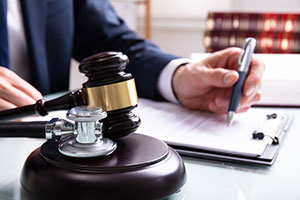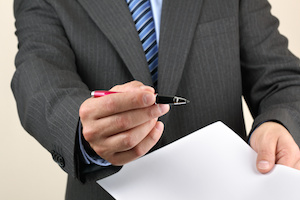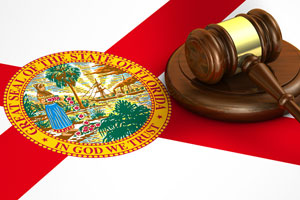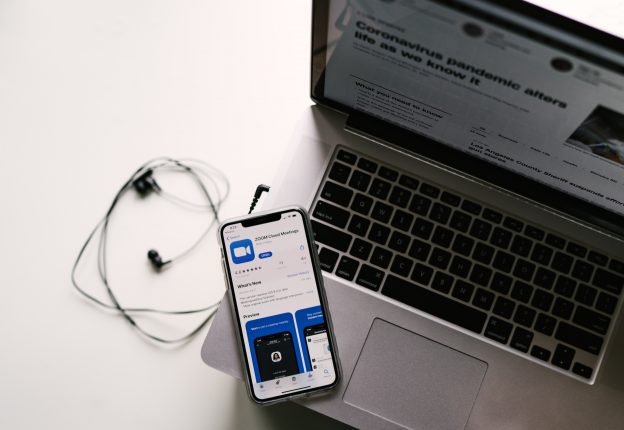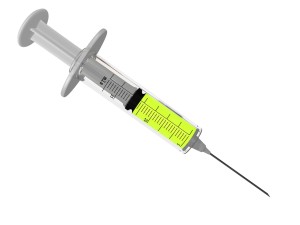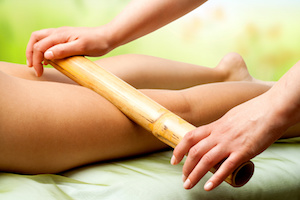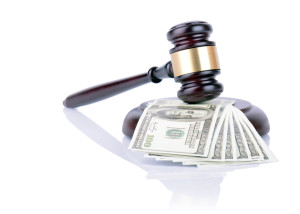In most medical malpractice cases, one or more expert witnesses for the plaintiff testify about the appropriate standard of care, a physician’s breach of that standard, and how the breach caused an injury to the patient. In most of those cases, a specific negligent act is identified as the mechanism that caused the harm. In some cases, however, no single act of negligence is the clear cause of the patient’s injury.
A legal theory known as res ipsa loquitur (“the thing speaks for itself”) allows negligence to be inferred from the nature of the accident. If it is unreasonable to conclude that the accident could have occurred in the absence of a negligent act, negligence can be inferred.
Alma Willis sued a plastic surgeon and other healthcare providers, alleging their negligence during surgical procedures regarding her breasts and abdomen. Although the experts testified to various breaches of standards of care, they could not determine which specific breach caused Willis’ injuries. The trial court did not allow the experts to testify that her injuries would not have occurred in the absence of negligence.
The trial and appellate courts treated the argument that no injury could have occurred without negligence as being based on res ipsa loquitur. An Illinois Appellate Court ruled that Willis’ experts should have been allowed to testify that no injury would have occurred in the absence of a negligent act, even if they could not identify the specific negligent act that caused her injury.
Willis’ Surgery and Its Aftermath
Willis’ doctor recommended that she have surgery to relieve her back problems. A plastic surgeon, Dr. Jeffrey Flagg, performed surgery to reduce the size of one breast and to reconstruct the other. He also performed a revision of her abdomen.
Dr. Flagg decided to perform all the procedures in a single surgery. He told Willis the operation would take five hours but it actually lasted twelve hours.
Willis was discharged the next day despite having painful swelling in her arms. Three days later, her daughter observed that she was disoriented. The daughter brought Willis back to the hospital, where doctors found blood clots (pulmonary embolism) in both of her lungs. She remained in the hospital for a week as the clots were treated.
During her hospitalization, nurses noted that Willis continued to complain about ongoing pain in her right hand that had been present since the surgery. A nurse noted in her chart that doctors were aware of her complaint.
Willis’ pain persisted after her discharge. About a month after her surgery, a neurologist determined that she had sustained nerve damage near her right elbow and in the carpal tunnel. Surgery to relieve pressure on the nerves was only partially successful. She continues to have pain and some limitation of motion in her right hand.
Willis’ Litigation
Willis sued Dr. Flagg, the hospital where her surgery was performed, and the anesthesiologists involved in the surgery. She alleged that Dr. Flagg unnecessarily prolonged her surgery and that her nerve injury would not have occurred in the absence of medical negligence.
Although an anesthesiologist testified that he did not remember the surgery, he believed that he, Dr. Flagg, and the initial nurse anesthetist would have supervised the positioning of Willis’ body during surgery. He thought they would have placed soft restraints on her arms between the wrists and the elbows, that they would have checked her positioning every hour, and that they would have repositioned her before the abdominal surgery.
Dr. Flagg testified that the surgery was prolonged by the discovery of a large mass on the chest wall. He acknowledged that longer surgeries increase the chance of developing a blood clotting condition known as deep vein thrombosis (DVT). He also acknowledged that Willis suffered from DVT after the surgery.
Dr. Flagg did not prescribe anticoagulants after the surgery, although he agreed that anticoagulants are one way to prevent DVT. He instead gave instructions to have Willis walk and move around after surgery, although he did not put that instruction into her discharge orders.
Willis’ Expert Testimony
Willis’ treating neurologist testified that the nerve damage near her wrist was caused by the carpal tunnel filling with fluid. Charles Barton, a nurse anesthetist, testified that the nurse anesthetist who positioned Willis during her surgery violated the standard of care by failing to position her correctly and by infusing far too much fluid. Barton also attributed the swelling in her arms after surgery to excessive fluid.
An orthopedic surgeon, Dr. John Fernandez, testified that Willis’ surgery caused her nerve damage. He opined that injuries to her brachial muscles that were shown on an MRI and injuries to her nerves shown on an EMG would not “just happen on their own.” Since Willis had no symptoms of those injuries before the surgery, they must have been caused by the surgery.
A neurologist, Dr. William McElveen, explained that a hematoma, probably caused by compression, led to the swelling at the elbow. He believed the compression could have been caused by the blood pressure cuff on her arm, someone leaning on her arm, or the extended position maintained during the surgery. He rejected the theory that nerve damage was caused by improper insertion of a needle during her subsequent hospitalization for blood clotting because Willis would have felt and complained about extreme pain if that had happened.
Dr. Geoffrey Keyes, a plastic surgeon, testified that the applicable standard of care required Dr. Flagg to end the surgery after he completed the abdominal revision, about five hours into the surgery, because Willis had lost a great deal of blood. The prolonged surgery and excessive blood loss increased the risk of complications, including pulmonary embolisms. He thought the prolonged surgery and Willis’ positioning most likely resulted in her nerve damage, although he could not identify the specific mechanism by which pressure was placed on the nerve. He thought the swelling of her arms might have caused the straps that held her arms to tighten, compressing the nerve.
Testifying as an expert in anesthesia, Dr. Brian McAlary testified that multiple factors, taken together, might have caused Willis’ arms to swell, even if no single factor was responsible. He identified the administration of excessive fluids, diminished oxygen delivery to the nerves in her arms, and the failure to change the position of her arms during surgery as contributing factors.
The court would not permit the experts to testify that the nerve damage would not have occurred in the absence of negligence. The jury returned a verdict in favor of the defendants.
Appellate Decision
On appeal, Willis challenged the trial court’s refusal to allow her experts to testify that the injuries could not have happened unless the healthcare providers were negligent. She also challenged the trial court’s refusal to instruct the jury that it could infer negligence if the principles of res ipsa loquitur were satisfied.
In Illinois, negligence can be inferred from the fact of an injury if (1) an injury of that nature would not ordinarily occur in the absence of negligence, and (2) the means of causing the injury were within the defendant’s exclusive control. Under those circumstances, the plaintiff need not call a witness who saw the act that caused the injury.
Willis was unconscious during her surgery and could not have seen anything. Since she was under the control of the defendants, a jury could find that any injury occurring during the surgery was caused by negligence if the injury would not ordinarily occur in the absence of negligence.
Willis presented expert evidence that she was injured during surgery. That evidence was sufficient to permit the jury to reject the defendant’s claim that she was injured during her second hospitalization. It was up to the jury to decide whether to believe Willis’ experts or the defense experts.
Willis’ also presented expert evidence that standards of care were breached during her surgery. Experts testified in depositions that the nerve damage Willis sustained would not have occurred in the absence of negligence. No defense evidence suggested a non-negligent explanation for the nerve damage that occurred during the surgery.
The trial court thought that res ipsa loquitur was inapplicable because Willis’ expert witnesses agreed that nerve compression during the surgery caused the injury. But the witnesses did not know what caused the nerve compression. It could have been caused by failing to loosen straps when Willis’ arms started swelling, or by administering excessive fluid during the operation, or by leaning against Willis’ body during the surgery, or by failing to reposition her during the lengthy breast surgery, or by repositioning her incorrectly before the abdominal surgery.
The trial court erred by concluding that the expert witnesses understood the mechanism of the injury. The outcome was a compressed nerve, but the mechanism by which the nerve became compressed was unknown.
A dissenting opinion suggested that the second hospitalization was a possible cause of the injury outside the defendants’ control and that the res ipsa theory was therefore unavailable. The majority opinion recognized that Willis’ experts provided ample reason to reject the testimony of the defense experts as speculative.
Which experts were worthy of belief was for the jury, not appellate judges, to decide. Willis was therefore entitled to have the jury instructed that it could find in favor of Willis if they agreed that (1) her injuries occurred while she was under the control of the defendants during the first surgery, and (2) those injuries would not ordinarily occur without negligence. She was also entitled to have her experts testify that she would not have been injured if negligent acts had not occurred.
A res ipsa loquitur jury instruction, and testimony that the injury could not have occurred in the absence of negligence, were necessary for a fair trial. Since Willis did not receive a fair trial, she was entitled to present her expert’s full opinions and to have her case decided upon the basis of correct jury instructions in a new trial.


